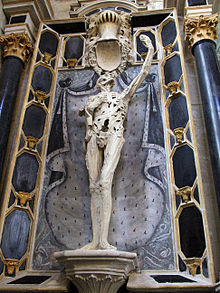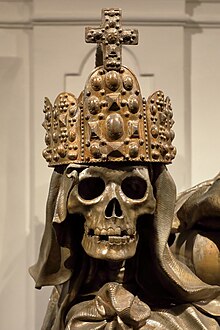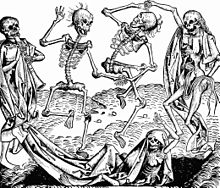
Back Макабра Bulgarian ماکابرا CKB Makabro Esperanto Macabro Spanish Makaaberi Finnish Macabre French Macabre ID Macabro Italian 마카브르 Korean Macabre Turkish





In works of art, the adjective macabre (US: /məˈkɑːb/ or UK: /məˈkɑːbrə/; French: [makabʁ]) means "having the quality of having a grim or ghastly atmosphere". The macabre works to emphasize the details and symbols of death. The term also refers to works particularly gruesome in nature.
- ^ Bellosi, Luciano (2000). Come un prato fiorito. Studi sull'arte tardogotica. Di fronte e attraverso. Storia dell'arte (in Italian). Milan: Jaca Book. p. 9. ISBN 9788816404335.
- ^ Aavitsland, Kristin B. (2012). "Mortis Memoria: To Remember One's Death". Imagining the Human Condition in Medieval Rome: The Cistercian fresco cycle at Abbazia delle Tre Fontane. Routledge (1st ed.). London and New York: Routledge. pp. 131–132. ISBN 9781138273078. LCCN 2011050166.